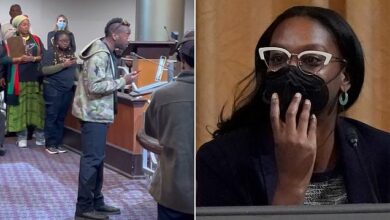Honoring Black History Month across Northern California

The theme for Black History Month 2024 is “African Americans and the Arts,” dedicated to recognizing African American influence on all forms of cultural expression.
SACRAMENTO, Calif. — Each February, we celebrate Black History Month to recognize Black people, history and culture.
First observed in 1976, Black History Month grew out of decades of organized efforts, led by historian Carter G. Woodson, to promote, research, preserve, interpret and disseminate information about the lives and experiences of Black people in America.
This year’s Black History Month theme is ‘African Americans and the Arts’ to acknowledge the influences African Americans had and continue to make in the “fields of visual and performing arts, literature, fashion, folklore, language, film, music, architecture, culinary and other forms of cultural expression,” according to the Association for the Study of African American Life and History (ASALH).
In honor of this year’s theme, ABC10’s Race and Culture team spoke with local Black artists and community members about their craft and how they’re expressing themselves year-round.
Meet Shawntay Gorman
Shawntay Gorman is a Black and Filipina Sacramento-based “artivist,” which she said means someone who changes the visual landscape of a community through the arts. She uses her artwork to advocate for equality for Black and Indigenous communities and people of color and to increase representation for Black and Filipino people, something she said she didn’t see enough of growing up.
Gorman said she also spreads messages of women empowerment, motivated by her personal experiences as a Black woman who has had to work harder than others to be acknowledged.
She holds onto both parts of her heritage tightly — she’s Cameroonian by way of Texas and Ilocano from Ilocos Norte, a province in the northern Philippines. In her everyday life, she tries to surround herself as much as possible with both communities and teaches her 19-year-old son about both of his cultural identities.
Gorman’s favorite artist is Nina Simone, a singer, pianist, songwriter and civil rights activist. Regarded as the “High Priestess of Soul,” Simone forcefully spoke out about the African American freedom struggle and created a legacy of liberation.
For Gorman, Black History Month is “a highlight of Black excellence,” a time to recognize the ways in which Black culture has inspired America.
Meet Danielle Green
Danielle Green is the co-founder and co-owner of Nacho House, a women and Black-owned pop-up vendor that serves nachos across the greater Sacramento area. The business was inspired partly by her childhood growing up in New Orleans and visiting “the candy lady.”
Candy ladies were considered staples, particularly in the South and in many Black neighborhoods; they sold chips, frozen treats, candy and sometimes nachos. They were one of the earlier examples of entrepreneurship for Black women.
Nacho House goes beyond nachos — it is Green’s pride as a Black business owner, as well as a legacy and tradition she hopes to pass down.
She looks toward her mother and late grandmothers as inspirations for the dishes she makes, remembering the love they would pour into a pot to serve the food to the entire family. The largest Nacho House menu item is the Hurricane Nacho, an idea sparked by Hurricane Katrina in 2005. Green said a portion of the funds go directly to hurricane victims.
For Green, Black History Month means paying homage to the ones who came before her, laying the path for her to become an entrepreneur and following her dreams.
Meet Sean Stewart
Sean Stewart is a professional photographer with Art is Life Photography. He said he’s been an artist for as long as he can remember.
Throughout his youth, he took on mastering various art mediums, such as airbrushing, digital art, fashion and more. He started taking photography seriously during the pandemic when he picked up more clients due to other photography companies temporarily shutting down.
While Stewart does not limit himself to themes for photoshoots, he always strives to convey art and power through his images. He said oftentimes the media portrays Black people in a negative light, which is why he aims to show the power behind what Black people can accomplish beyond stereotypes.
Stewart said he’s inspired by figures who have a role in helping out in the community, whether that be doctors, teachers or community activists. Through his art, he hopes others will feel they can accomplish their dreams through hard work, dedication and consistency.
Meet Trinity Sharpe
Trinity Sharpe is a saxophonist living in Stockton and was raised in Alabama, Tennessee and Florida. Since she was 3 years old, she began experimenting with sounds by tapping glasses filled with different levels of water and plucking stretched rubber bands.
She would later pick up various instruments — at age 8, the viola; at age 11, the flute. Eventually, at age 12, she decided to master the saxophone.
For Sharpe, representation matters. She said women in the music industry are often sexualized and not appreciated for their knowledge, gift and creativity. She added that there aren’t as many female saxophonists, which she hopes to see more of.
Sharpe points to the 1960s as a pivotal time for the explosion of jazz music as it took on an active political role in the struggle for civil rights.
Musicians like John Coltrane and Miles Davis used music to convey themes of liberation, anger and resistance. Sharpe describes her own music as jazz, hip hop, R&B and pop mix. She aims to convey encouraging, uplifting and motivational messages.
If you would like to book Sharpe for an event, you can email her at trinity.sharpe@gmail.com.
Meet Nicole Manker
Nicole Manker is an “artivist,” and board member of the Institute for Dunham Technique Certification (IDTC) and Celebration Arts, as well as the artistic director of Sacramento/Black Art of Dance (S/BAD).
Currently, she is one of only 30 certified Dunham teachers in the world, a title she doesn’t take for granted.
The Dunham technique is described as a vibrant African diasporic dance technique created by Katherine Dunham, an American dancer, choreographer, anthropologist and social activist with a “focus on deep connection with the self and with others,” according to IDTC.
The Dunham Technique is foundational in S/BAD, founded in 1991 by Dr. Linda Goodrich, a former Sacramento State professor.
S/BAD is dedicated to uplifting the African diasporic movement in all its forms, driven by community dancers and students.
Manker aims to convey a story to the audience through movement. One of the themes she’s felt pulled towards surrounds the erasure of women.
She said when working with performers, she has encouraged them to think about instances in which their presence or voice was not as valued as it should be.
We want to hear from you!
The Race and Culture team’s mission is to serve our diverse communities through authentic representation, community engagement and equitable reporting.
Accomplishing our goals of inclusive reporting requires hearing from you. Is there a person or place that you want us to highlight? Email us at raceandculture@abc10.com or fill out the form below.
Watch more Race and Culture stories: Free mental health counseling for Black women at Dream Girls hair salon in Elk Grove
























































